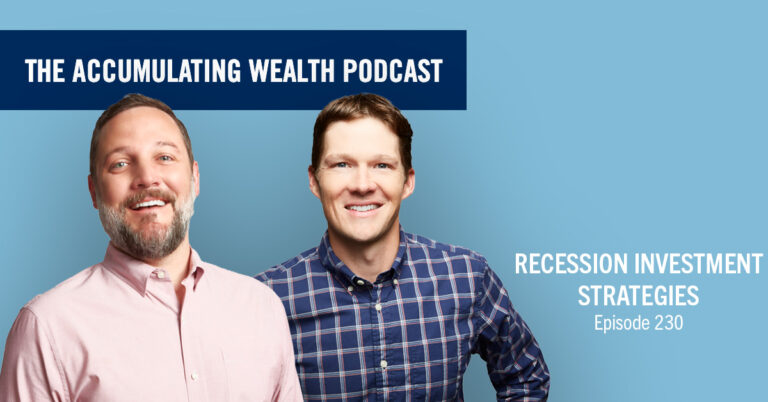Whether young or retired, this is advice you can’t ignore
At the end of the day, we all want to know the secret that has led others to financial success. Surely, they’ve figured out a mysterious formula or discovered a secret sauce. We’re all just looking for the “easy math” that gets us to a comfortable retirement. Is it really as simple as that?
One long-standing misconception is that retirees should pull back from investing in stocks because of the possible short-term risks. Other financial wizards say it’s a waste of time for young investors to invest in bonds. Yet another popular rule of thumb is that you should hold a percentage of stocks that is equal to 100 minus your current age. So, if you’re 65, about 35 percent of your money should be in stocks.
Is there a one-size-fits all winning strategy?
“Rules of thumb are just there to give people a starting point,” cautions CWA Partner and CPA Brian Bortz. “This is what I always say about rules of thumb and finance: If you don’t like this rule of thumb, I’ve got another one over here.”
Because he works with many CWA clients on retirement planning in addition to serving as a member of our investment committee, Brian brings a unique perspective on portfolios. In the consult room, Brian often emphasizes how everyone has different retirement goals and that makes many old adages only somewhat useful.
So, if we can’t make the math easy, how should you diversify your retirement fund into stocks, bonds, and cash? It all comes down to a few key financial pillars that you should evaluate at every phase of life.
Risk tolerance
Whether you are early in your career or closing in on retirement, everyone has a different level of risk tolerance, meaning the degree of variability that you are willing to withstand in financial planning.
“When you’re young and at the early part of your career, many feel they can afford to take a whole bunch of risks and don’t have much to lose,” notes Brian. “Later in life, people are often told that they need to be more conservative as they grow older. Well, neither of those assertions are necessarily true.”
Rules of thumb are often good testing grounds for your risk tolerance. If you have specific goals in mind for retirement, those need to be planned for whether it’s retiring on a beach in New Zealand or simply spending more time with your grandkids.
How close you are to retirement and how much risk you are willing to assume in order to meet those goals all factor into managing your portfolio. Whether you are 25 or 65, there should be a meaningful focus on long-term wealth accumulation that takes into consideration your specific risk tolerance.
Brian also notes that he has a few clients who have a huge appetite for risk. No matter if you are a new dentist or happily retired, it can be useful to create a subset within your allocation to take big risks with, whether that’s buying the latest cryptocurrency or a hot stock you’ve heard about. This way, you can protect and grow savings while taking chances that meet your high-risk appetite.
Rebalancing
To maintain your preferred level of risk tolerance, rebalancing your portfolio is essential. Everyone should rebalance their portfolio and, for tax-deferred accounts that do not have a tax impact, consider rebalancing no less than once a year. However, automatic rebalancing isn’t always a great solution because it could potentially create additional (and unnecessary) capital gains tax. Although it’s tempting during times of adversity, like this past year, consider that if you pull out of investing altogether, you will miss out on long-term benefits.
“Market volatility means both upside and downside movement,” cautions Brian. “Of course, we’ll take all the upside volatility. But you can’t have one without the other. What a good advisor will do is protect people from taking undue risk.”
Regular rebalancing with your long-term growth goals in mind is key to fighting volatility. This way you can stay on track for your retirement goals, no matter the stage of your career or how close you are to retirement.
Diversification
Another key investment pillar is diversification, which means having exposure to assets that move differently over time so that you effectively balance risk and reward.
“Think about what diversification really is. You have a bunch of different stuff, some big, some small, some growth, some value, some stocks, some bonds,” explains Brian. “The challenge that people have with diversification is they tend to only focus on what didn’t do as well as their top performer. And, that’s not a good answer.”
Brian emphasizes that having a diverse asset allocation isn’t just to see what performs best but rather to have exposure to various assets because they move differently over time. That means through each phase of your life, you need diversification so that your money is always working for you.
For example, depending on your specific financial situation, you may be keeping significant cash on hand to provide liquidity in case something happens. That means you are less likely to have to sell stocks at a bad time. If you’re mid-career and at your highest earning potential, a bad stock sale might matter less. But, consider that if you’ve already retired, you have less time to make up for that loss.
However, that’s not to say that retirees should not invest in stocks at all. Allocating some of your portfolio in stocks during retirement can not only off-set inflation but extend savings and allow extra years to maintain your lifestyle and enjoy retirement.
So, are investment rules of thumb useless?
Ultimately, the winning rule-of-thumb is the one that works for your specific goals, appetite for risk and investment horizon. While short and pithy financial methodologies are comforting, if they don’t help you reach financial goals, they’re not worth following.
However, these financial adages are a great way to get a gut check. Are you willing to take on significant risk to make your financial plan work? Does a mythical number make sense as the correct amount of money to save for retirement? Use these rules-of-thumb to stop and take a critical look at your financial plan.
If you can’t find the right answers, considering reaching out to a qualified advisor that can put you on the right path. CWA planners have decades of experience helping dental professionals at every stage of life determine risk tolerance and create investment strategies that work for all kinds of financial goals.
Reach out today and we’ll create a custom rule-of-thumb just for you.














